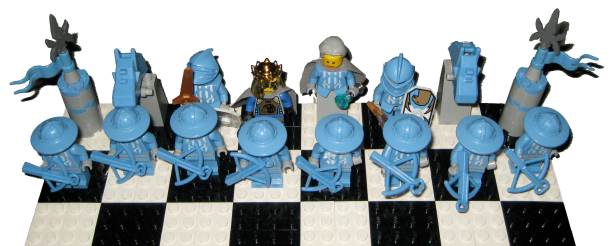
Today, Brocade announced that it has completed its acquisition of Foundry Networks. This is just the latest move in the strategic game to control the next generation of Ethernet, and possibly all local connectivity, including storage. Although 1 Gb Ethernet, 4 and 8 Gb Fibre Channel, and InfiniBand are all still going strong, the attention of the industry, the pundits, and the prognosticators (myself included) is firmly fixed on enhanced 10 Gb Ethernet. So Brocade’s move seems especially relevant to the core question of which companies will thrive and which will fail in a 10 Gb world.
Cisco is, as always, the big player everyone is gunning for. They created a subsidiary, Nuova, to develop a next-generation architecture, then absorbed the company in April. The result of Nuova’s work is Cisco’s Nexus line of data center switching products as well as much contribution to enhancements to Ethernet, known as Data Center Bridging (DCB) to the IEEE, Data Center Ethernet (DCE) to Cisco, and Converged Enhanced Ethernet (CEE) to others. The whole Nuova episode worked out quite well for Cisco, and they are well-positioned in the next-generation Ethernet game.
Although the fight to control the next generation of datacenter I/O can sometimes seem like a two-way battle between Cisco and Brocade, there are many players involved:
- Woven Systems launched its second-generation product in October. Aimed squarely at the largest data centers, the Woven line sells at bargain prices and expands incrementally, maintaining performance, according to the company.
- Force10 has also found success selling a complete line of 10 Gb Ethernet products, from the core data center to the edge.
- HP’s ProCurve line is mostly focused on smaller businesses, but the number-two supplier of networking hardware shouldn’t be discounted in this horse race!
- Arista Networks is another dark horse. With ex-Cisco “Data Center 3.0 commander” Jayshree Ullal and ex-Sun Andy Bechtolsheim, Arista has so far played its 10 Gb song to a cloud computing refrain. But the company reportedly has strong technology, and could be a contender in the converged I/O space as well.
This playing field is wide open. I expect Brocade and Cisco to be major players over the next few years, and that HP will acquire one of the other players at some point to add to their ProCurve line. But no matter who wins, the dominance of 10 Gb Ethernet is a safe bet.
It looks like Brocade and Foundry have been been working very hard, preparing for this. There might be a tiger in the tank at Brocade after all. I like the way they seem ready to take the bull by the horns. In the months to come we’ll see how much conviction they have to follow up on this acquisition.
I find it interesting that people are all on about 10Gig Ethernet or 8Gig Fibrechannel when most people don’t use the 2Gig they already have.
True story – an engagement I was on a few months ago had the customer upgrading from an older environment, so, as such, we ran a baseline health-check on their san and found that even during peak utilization they were running at no more than 30% on each switch. This means that of the 2Gigabit they had available they were using, on average, six-tenths of a gig.
Of course they *HAD* to go 4Gig, which goes to show you that marketing trumps engineering any day of the week and twice on Sunday.
4Gig, 8Gig, 10Gig, it doesn’t matter. What matters is utilization, distance/latency, and ASIC layout.
I find it interesting that people are all on about 10Gig Ethernet or 8Gig Fibrechannel when most people don't use the 2Gig they already have.
True story – an engagement I was on a few months ago had the customer upgrading from an older environment, so, as such, we ran a baseline health-check on their san and found that even during peak utilization they were running at no more than 30% on each switch. This means that of the 2Gigabit they had available they were using, on average, six-tenths of a gig.
Of course they *HAD* to go 4Gig, which goes to show you that marketing trumps engineering any day of the week and twice on Sunday.
4Gig, 8Gig, 10Gig, it doesn't matter. What matters is utilization, distance/latency, and ASIC layout.